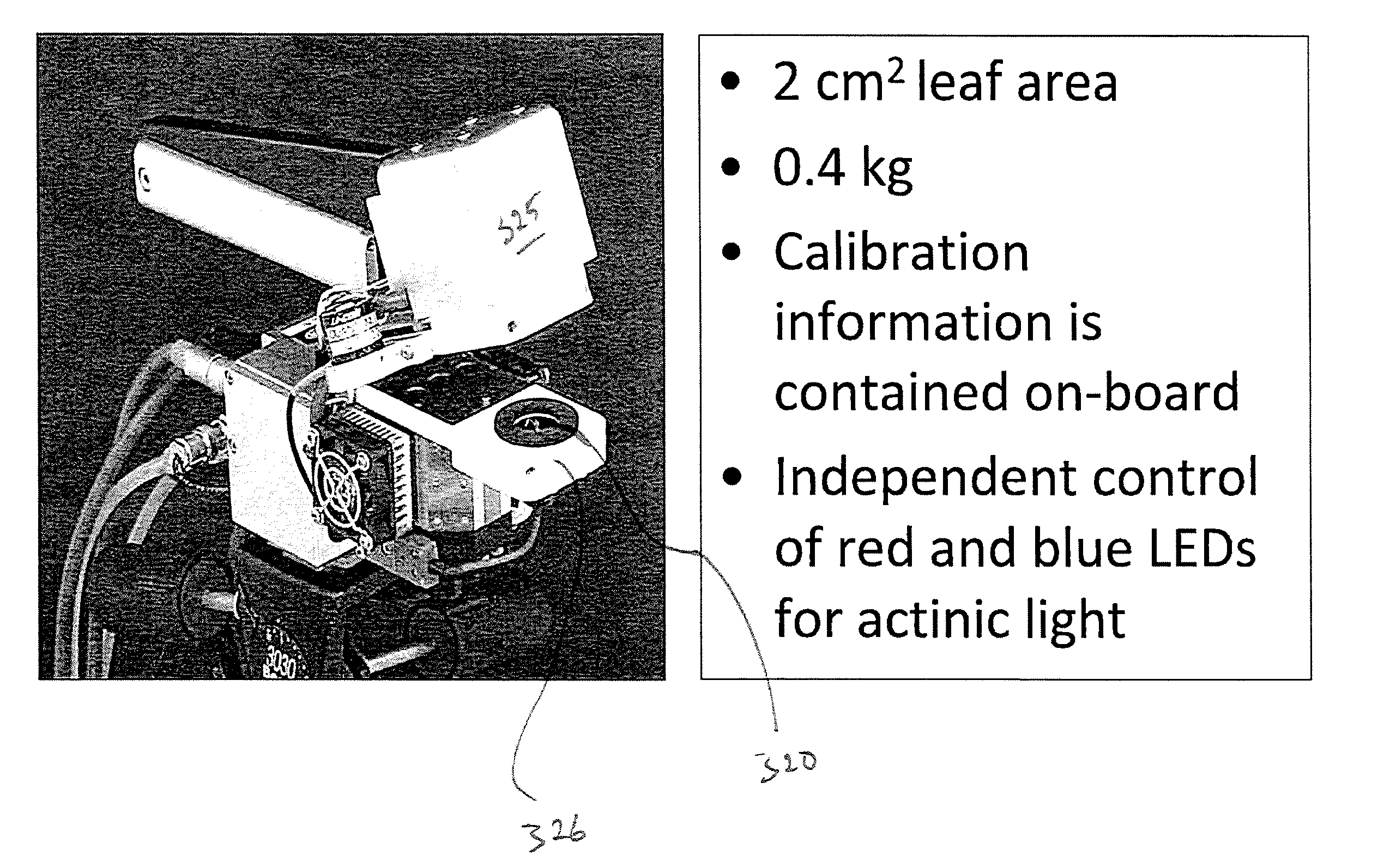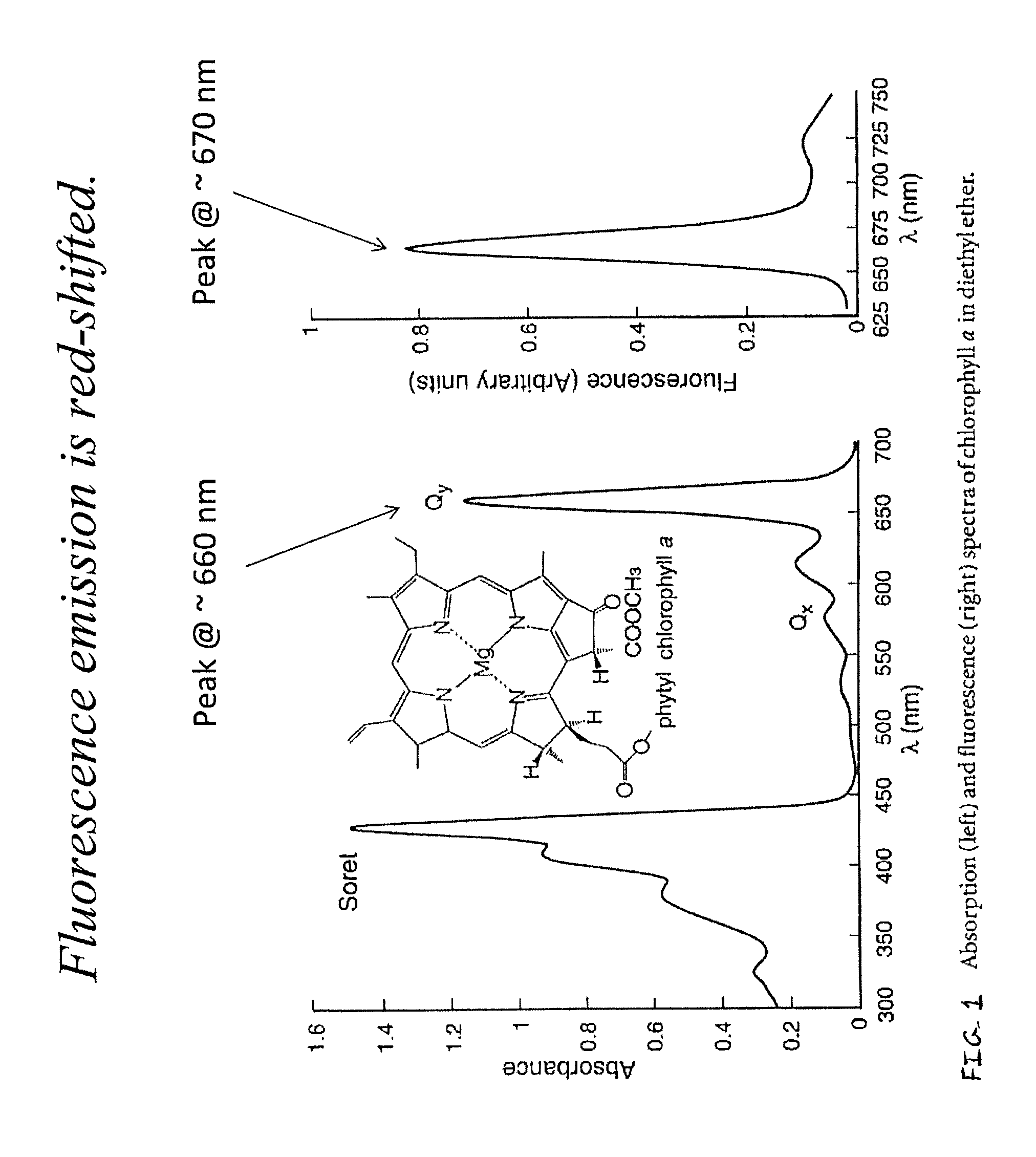Systems and methods for estimating photosynthetic carbon assimlation
- Summary
- Abstract
- Description
- Claims
- Application Information
AI Technical Summary
Benefits of technology
Problems solved by technology
Method used
Image
Examples
Embodiment Construction
[0027]Generally, methods, devices, and systems for estimating photosynthetic carbon assimilation from measured stomatal conductance (gs) and electron transport rates (ETR) of chlorophyll-containing tissue, such as that in plant tissue / leaves, are presented.
[0028]FIG. 2 illustrates a system 100 for calculating a value of carbon assimilation for a sample containing chlorophyll according to one embodiment. System 100 includes an illumination or excitation source 110 configured to illuminate a sample area 120 with light of a specific wavelength or range of wavelengths (e.g., monochromatic light, or broadband encompassing a wide range of wavelengths). Examples of useful light sources include lasers, photodiodes, lamps, such as xenon bulbs or arc lamps, quartz halogen lamps, tungsten lamps, mercury-vapor lamps and other discharge lamps, light-emitting diodes (LEDs) of various colors (e.g., white red, blue, etc). Where a broadband source is used, such as a white light source, one or more f...
PUM
 Login to View More
Login to View More Abstract
Description
Claims
Application Information
 Login to View More
Login to View More - R&D
- Intellectual Property
- Life Sciences
- Materials
- Tech Scout
- Unparalleled Data Quality
- Higher Quality Content
- 60% Fewer Hallucinations
Browse by: Latest US Patents, China's latest patents, Technical Efficacy Thesaurus, Application Domain, Technology Topic, Popular Technical Reports.
© 2025 PatSnap. All rights reserved.Legal|Privacy policy|Modern Slavery Act Transparency Statement|Sitemap|About US| Contact US: help@patsnap.com



